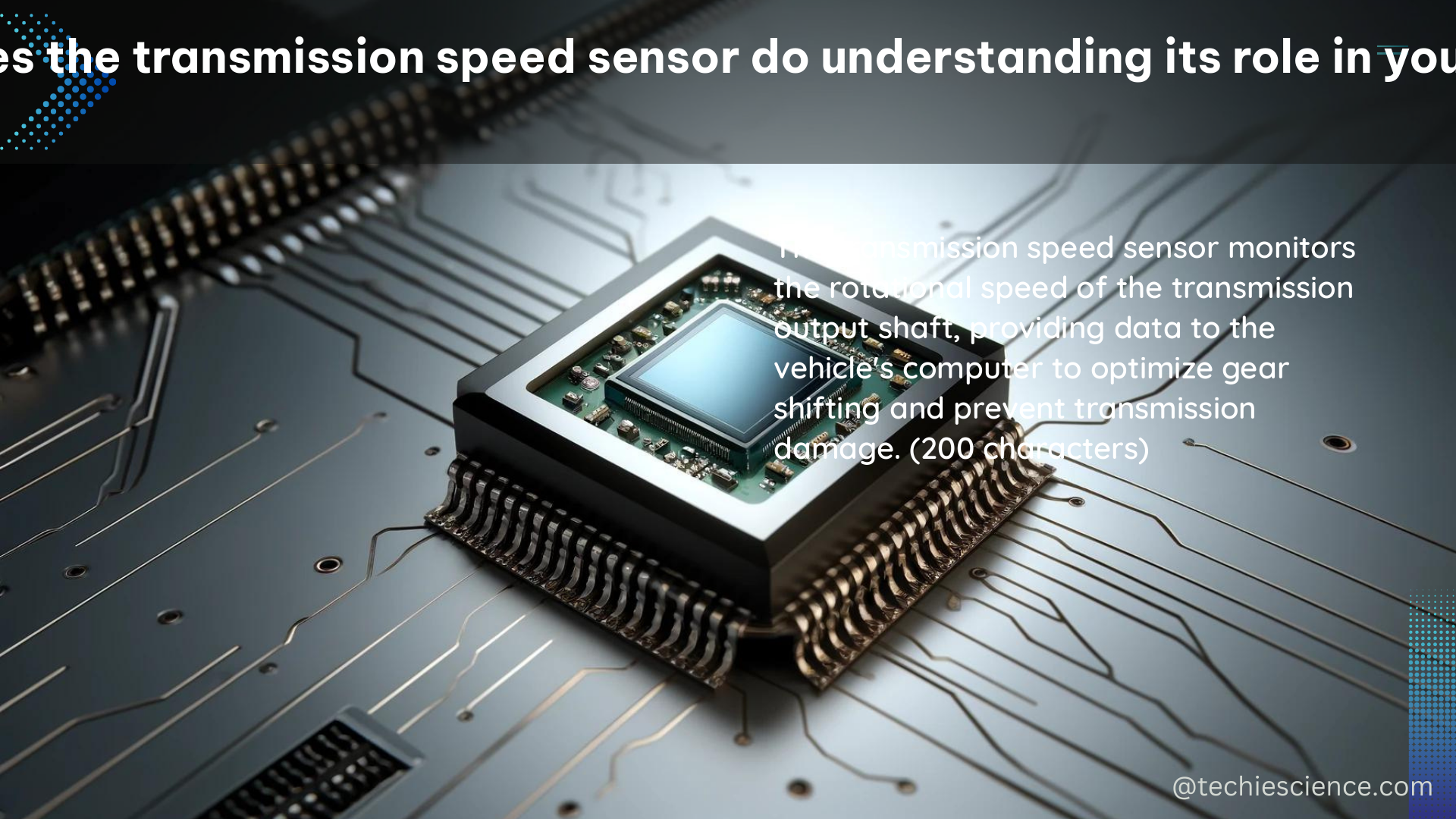The transmission speed sensor, also known as the vehicle speed sensor (VSS) or output shaft speed sensor, is a critical component in a vehicle’s transmission system. It measures the number of revolutions or distance traveled per unit of time, providing essential data to the powertrain control module (PCM) or other onboard computers to determine the operation of various output devices.
Understanding the Types of Speed Sensors
In a typical vehicle, there are two main types of speed sensors: the input shaft speed (ISS) sensor and the output shaft speed (OSS) sensor.
Input Shaft Speed (ISS) Sensor
The ISS sensor monitors the speed of the input shafts of the transmission. It tracks the rotational speed of the transmission’s input shaft, which is connected to the engine’s crankshaft. This information is crucial for the PCM to determine the appropriate gear ratio for efficient power delivery.
Output Shaft Speed (OSS) Sensor
The OSS sensor monitors the speed of the transmission’s output shafts. It tracks the rotational speed of the transmission’s output shaft, which is connected to the vehicle’s drive wheels. This data is essential for the PCM to calculate the vehicle’s speed and adjust the transmission’s gear ratios accordingly.
The Role of Speed Sensors in Transmission Control

The PCM analyzes the data from both the ISS and OSS sensors to determine the appropriate gear the transmission should engage for efficient driving. This process involves comparing the actual gear ratio (based on the sensor data) to the desired gear ratio.
If the actual gear ratio does not match the desired gear ratio, the PCM sets up a diagnostic trouble code and illuminates the “check engine” light on the vehicle dashboard. This alerts the driver to a potential issue with the transmission system.
Potential Issues and Symptoms
Issues with the speed sensors can cause various problems, including:
- Harsh or Improper Shifting: If the speed sensors are not providing accurate data, the PCM may not be able to determine the correct gear ratio, leading to harsh or improper shifting.
- Cruise Control Malfunction: The speed sensors’ data is crucial for the cruise control system to maintain a consistent speed. If the sensors are faulty, the cruise control may not function correctly.
- Check Engine Light Activation: When the PCM detects an issue with the speed sensors, it will set a diagnostic trouble code and turn on the check engine light, alerting the driver to the problem.
Technical Specifications of Transmission Speed Sensors
- Sensor Type: The transmission speed sensor is typically a Hall-effect or variable reluctance sensor.
- Voltage Output: The sensor produces low-voltage signals, typically ranging from 0.5 to 5 volts, that are transmitted to the PCM or other control modules.
- Sensor Mounting: The sensor is usually mounted on the transmission housing, with the sensor tip positioned near the rotating transmission shaft.
- Sensor Function: The sensor determines the vehicle’s speed by counting the number of revolutions or distance traveled per unit of time. It can also detect the direction of travel (forward or backward).
- Data Usage: The sensor’s data is used by the PCM to calculate the vehicle’s speed, adjust shift levels or transmission speed, track travel distance, and even indicate when to auto-lock doors in certain vehicles.
Troubleshooting and Maintenance
To ensure the proper functioning of the transmission speed sensor, it’s essential to follow these DIY tips:
- Regular Inspection: Regularly check the transmission speed sensor for any signs of damage or wear, such as loose connections, corrosion, or physical damage.
- Diagnostic Code Checking: If the check engine light turns on, use a diagnostic tool to check for any error codes related to the speed sensor. This can help identify the root cause of the issue.
- Sensor Replacement: If the speed sensor is faulty, replace it with a new one following the manufacturer’s instructions. Ensure the new sensor is properly aligned and connected to the electrical connector.
By understanding the role of the transmission speed sensor and following proper maintenance practices, you can ensure your vehicle’s transmission system operates efficiently and avoid potential issues.
References:
- 3 Signs of a Failing Transmission Speed Sensor
- What Are the Symptoms of a Failing Transmission Speed Sensor?
- Understanding the Speed Sensor

The lambdageeks.com Core SME Team is a group of experienced subject matter experts from diverse scientific and technical fields including Physics, Chemistry, Technology,Electronics & Electrical Engineering, Automotive, Mechanical Engineering. Our team collaborates to create high-quality, well-researched articles on a wide range of science and technology topics for the lambdageeks.com website.
All Our Senior SME are having more than 7 Years of experience in the respective fields . They are either Working Industry Professionals or assocaited With different Universities. Refer Our Authors Page to get to know About our Core SMEs.